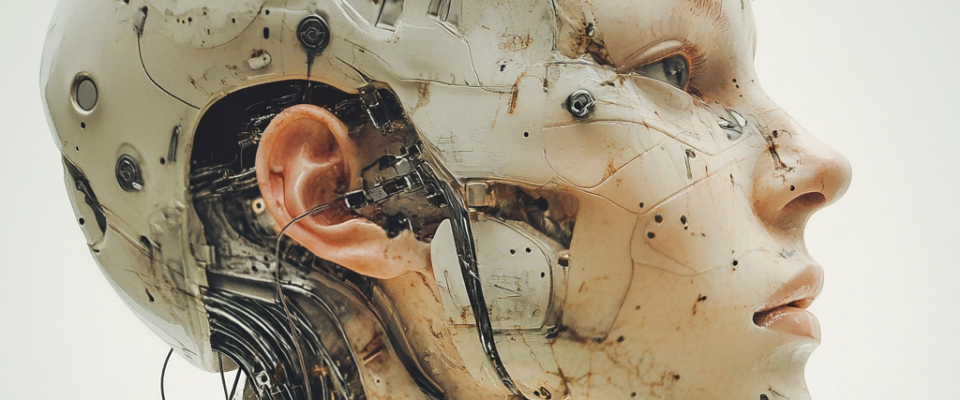Modern technologies are increasingly blurring the line between a living organism and a machine, creating hybrid life forms, in which organic fabrics are combined with mechanical elements and digital systems. Just a few decades ago such ideas seemed fantastic, but today they are becoming a reality thanks to bioengineering, robotics, neural interfaces and nanotechnology.
Merging biology and technology: how hybrid organisms are created
Modern technologies allow the integration of mechanical and biological components at a variety of levels. This can be either simple mechanical support or complex systems that are completely built into the body.
The most significant areas of development of hybrid life forms:
- Biomechanical prostheses and implants – modern artificial limbs, exoskeletons and cybernetic devices connected to the nervous system.
- Neural interfaces and digital implants – systems that allow signals to be transmitted between the brain and a computer, creating the ability to control equipment with the power of thought.
- Artificial organs and biocompatible materials – tissues and structures created from biological cells, but supplemented with mechanical elements to enhance their functions.
- Genetically modified organisms with built-in mechanisms – creation of cyber-insects, biorobots and biologically active materials with built-in digital sensors.
- Nanotechnology and artificial intelligence in biology – microscopic mechanisms built into cells that can repair tissue, fight disease, and even modify the body at the cellular level.
These developments are actively used in medicine, military, industry and research. They not only help people with disabilities, but also open the way to creating people with new physical and cognitive capabilities.
Biomechanical implants and their effect on the human body
The development of biomechanics makes it possible to create implants that not only replace lost body parts, but integrate with the body, becoming its natural extension. Already today, cybernetic prostheses can transmit signals to the brain, allowing users feel touch, temperature and pressure.
Such technologies offer hope to millions of people who have lost limbs or suffer from neurological disorders. For example, modern prosthetic hands can perform complex tasks by responding to commands from the brain, and exoskeletons allow paralyzed patients to walk again. But the possibilities are not limited to restoring functions – scientists are working on strengthening physical characteristics, which can lead to the appearance people with mechanically enhanced bodies that will be stronger, faster and tougher than normal humans.
Living machines – genetically modified organisms with built-in mechanisms
Scientific research goes beyond the human body, creating completely new forms of life – hybrid biorobots and cyber-organisms. It could be insects with embedded microchips, bacteria with nanorobots, or even artificial organs that can interact with digital systems.
Such technologies are already used in intelligence, medicine and agriculture. For example, scientists are developing drone insects for search operations and bacteria that can detect contaminants in water. However, there is ethical question: if we learn create completely artificial life forms, won’t we lose control over natural processes?
Ethical and social implications of introducing hybrid technologies
Any technology that alters human nature faces serious moral and legal challenges. Hybrid life forms rise questions about the boundary between man and machine, the risks of loss of identity and the potential division of society.
The main concerns relate to the fact that access to technology will be uneven, which can lead to the emergence of a new class of “improved” people. Besides, it is unknown how modifications will affect the human psyche and personality.
Development prospects: can hybrid life forms become a new stage in evolution?
The fusion of biology and mechanics can become not just a technological achievement, but a new round of evolution. If a person learns control genetics, improve the body with the help of machines and interact with AI on a new level, could this lead to the appearance a completely new species of human?
Many futurologists believe that in a few decades people will cease to be exclusively biological beings. Opportunity connecting the brain to digital systems, using mechanical enhancements and replacing biological organs with artificial ones can make humanity more resilient and smart, but will cause deep philosophical questions about the essence of man.
Organisms are a unique symbiosis of living cells and artificial components, which opens up enormous prospects in medicine, industry, the military, and even in everyday life. Cybernetic implants, artificial organs, brain-computer interfaces, as well as genetically modified organisms capable of performing certain tasks are already being created. Such technologies help restore lost functions, enhance human capabilities, and even create completely new forms of life that do not exist in nature.
Hybrid forms of life are not just technological progress, but a new reality that is already changing the understanding of the boundaries of the human body and consciousness. Integration biological, mechanical and digital elements allows create completely new creatures, restore lost body functions and even improve human abilities. However, these technologies also bring risks associated with social inequality, moral dilemmas and unpredictable consequences for the future of humanity.
The main risks are associated with the loss of control over new technologies, the creation of social inequality and possible changes in human nature.
In the early stages, such developments will be expensive, but over time they can become widespread. However, the possibility remains that “enhanced” people will receive significant advantages over ordinary people, which can lead to new forms of discrimination.

